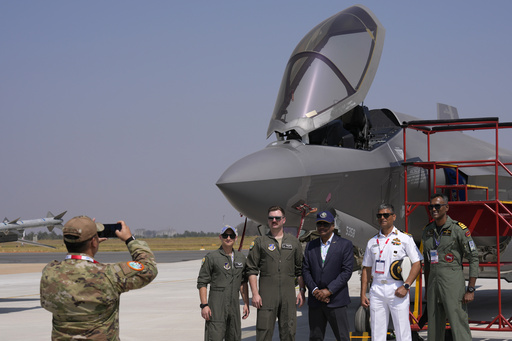SRINAGAR, India — There is cautious optimism among military analysts in India following discussions between Prime Minister Narendra Modi and U.S. President Donald Trump about increasing defense sales to New Delhi, which include advanced technologies such as the F-35 stealth fighter jets. The enhancement of the U.S.-India strategic partnership was a focal point of the meeting, highlighting the defense sector as a lucrative arena and positioning India as a leading purchaser globally. According to Lt. Gen. Vinod Bhatia, who served as India’s director-general for military operations from 2012 to 2014, the sales are expected to not only please Trump but also strengthen India’s conventional deterrence capabilities.
Bhatia emphasized that “defense diplomacy is the core of diplomacy these days,” pointing to a joint statement released at the White House where both leaders described their intentions to establish a new 10-year framework for the U.S.-India Major Defense Partnership. The two authorities committed to elevating military cooperation across various domains—air, land, sea, space, and cyberspace—while enhancing training, conducting joint exercises, and integrating state-of-the-art technologies. Furthermore, they pledged to support overseas deployments of both U.S. and Indian militaries in the Indo-Pacific region, which entails improved logistics and intelligence-sharing initiatives.
Despite the optimism regarding defense cooperation, Indian military specialists are cautious about relying less on Russian arms, which have historically accounted for a significant portion of India’s defense inventory. Raja Mohan, an analyst at the Institute of South Asian Studies in Singapore, remarked that achieving a broader strategy for coproduction and research within India represents a long-term project requiring time and effort. Rahul Bedi, an independent defense analyst in India, cautioned that the F-35 jets will not address India’s immediate requirement for a fleet of over 100 aircraft, noting, “They are not going to come tomorrow; it’s going to take several years to start arriving.”
Given its extensive borders and ongoing territorial disputes with neighboring countries such as Pakistan and China, India heavily relies on Russia for military updates and modernization. While India is actively trying to diversify its defense acquisitions by engaging with the U.S., Israel, and France, around 60% of its defense assets still originate from Russian sources. Lt. Gen. D.S. Hooda, who led the Indian military’s Northern Command from 2014 to 2016, highlighted that facing threats from both China and Pakistan necessitates technologically advanced systems, which he believes are most readily available from the United States.
China’s ascent as a global influence has further aligned India’s interests with those of the U.S., as well as the Quad—a strategic alliance involving the U.S., India, Australia, and Japan. This growing partnership has generated concerns about China’s economic pressures and military activities in the region, with Indian authorities viewing it as a counterbalance to China’s expanding footprint. The apprehensions are heightened by China’s enhanced naval presence in the Indian Ocean and its efforts to strengthen relations with regional neighbors such as Pakistan, Bangladesh, Sri Lanka, and Nepal.
Historically, during the early 1990s, a staggering 70% of Indian army weapons, 80% of air force systems, and 85% of naval platforms were sourced from Soviet stock. Yet from 2016 to 2020, Russia represented nearly half of India’s defense imports, while France and Israel contributed 18% and 13%, respectively, according to research from the Stockholm International Peace Research Institute. Major acquisitions from the U.S. have included long-range maritime patrol aircraft, transport aircraft like the C-130, as well as missiles and drones.
The surge in defense sales is also anticipated to alleviate the trade deficit between the two nations, according to Hooda, who stated, “It’s a win-win for all. America will get more business, and we’ll get modern weapons.” He further asserted that these transactions could help mitigate pressures related to tariffs and trade imbalances.




